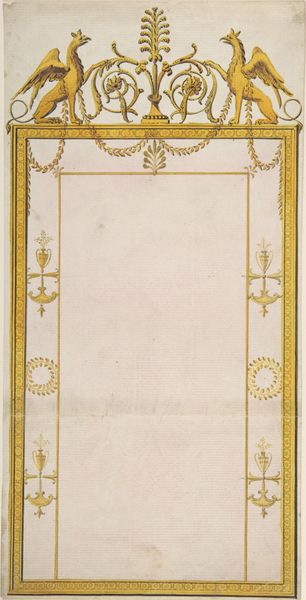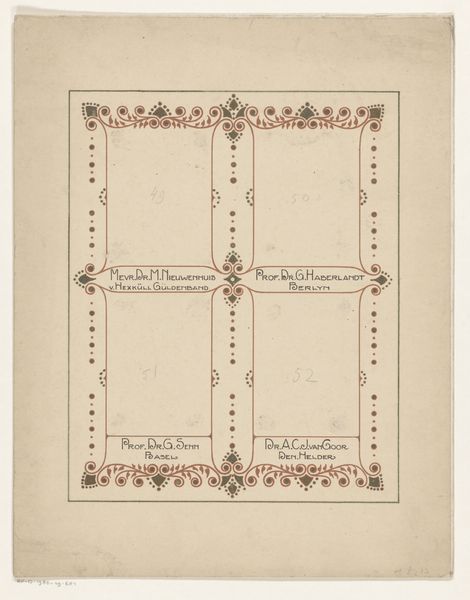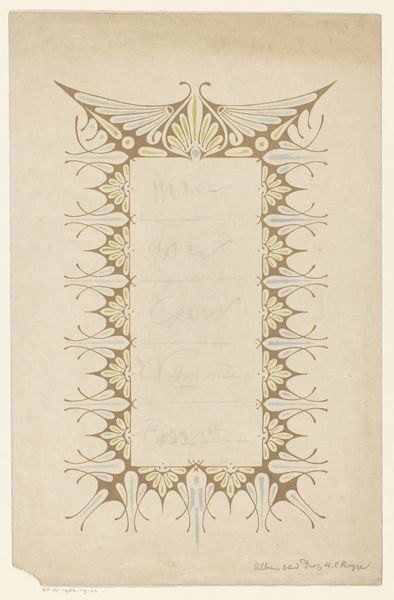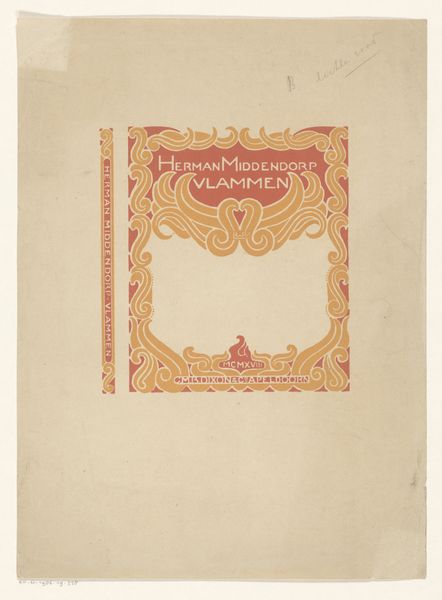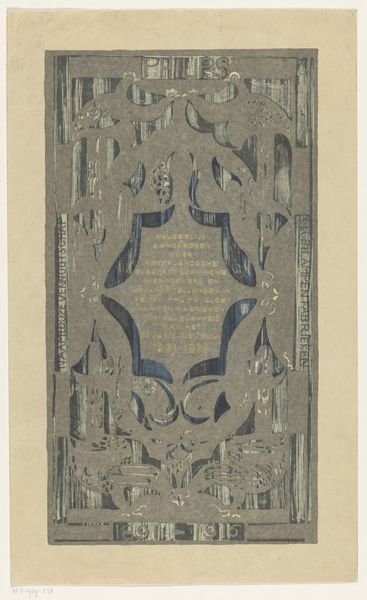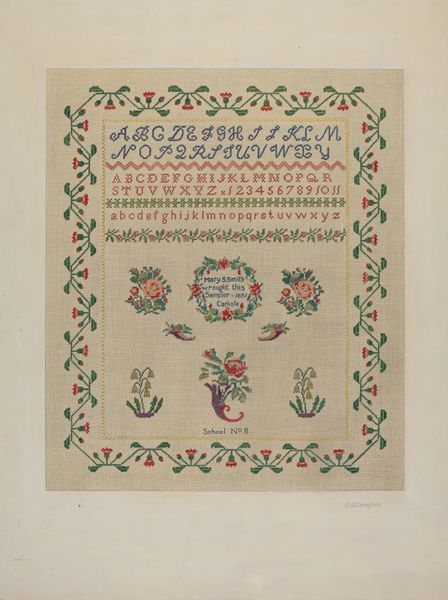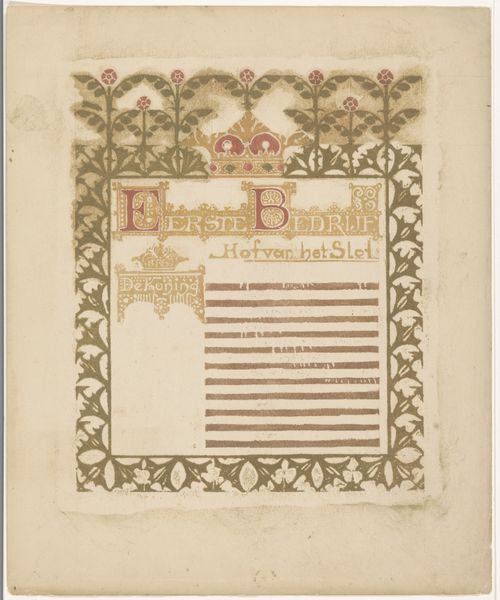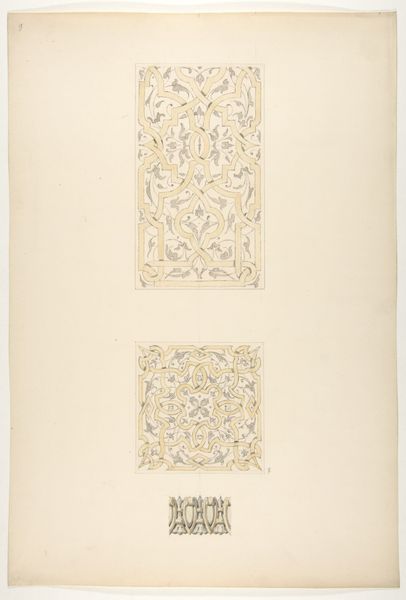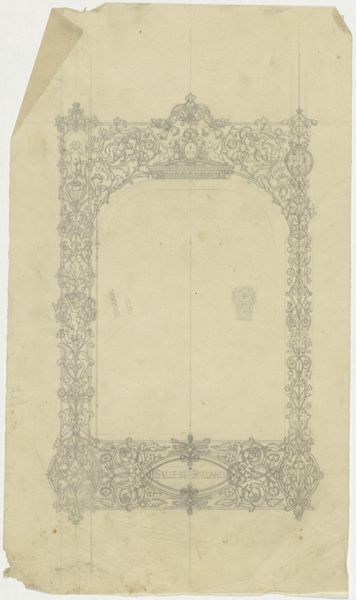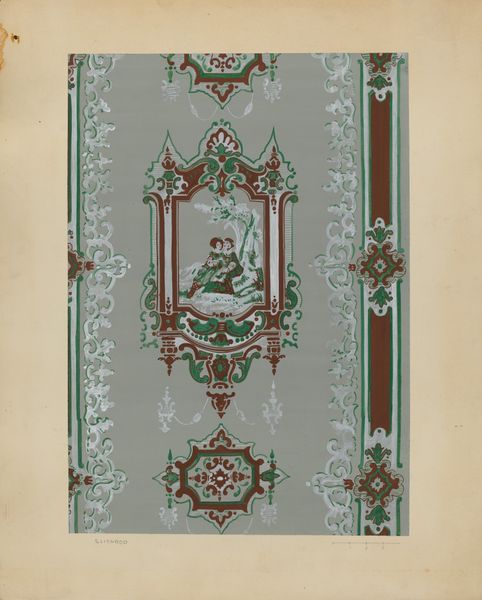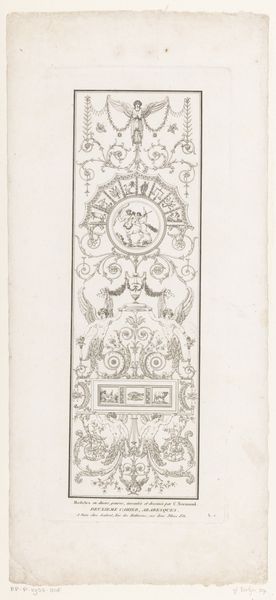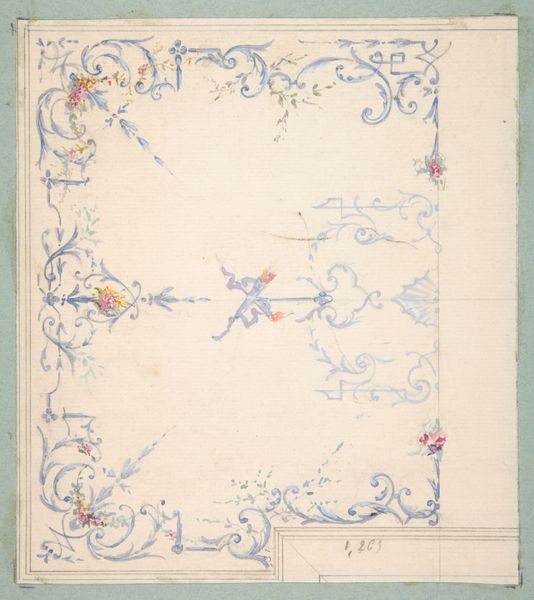
Ontwerp voor een advertentie van Electrische Drukkerij De Industrie te Utrecht 1913
0:00
0:00
#
natural stone pattern
#
circular oval feature
#
decorative element
#
pastel soft colours
#
collage layering style
#
pattern background
#
ethnic pattern
#
pattern repetition
#
layered pattern
#
ethnic design
Dimensions: height 431 mm, width 345 mm
Copyright: Rijks Museum: Open Domain
Curator: We're looking at a design for an advertisement titled "Ontwerp voor een advertentie van Electrische Drukkerij De Industrie te Utrecht," created in 1913 by Reinier Willem Petrus de Vries. Editor: Immediately, I notice the restrained color palette; muted reds and blues set against what seems to be raw paper. It exudes a handcrafted sensibility. Curator: Indeed. The symmetry is quite deliberate. Consider how the curvilinear forms arching over the text mirror the more angular patterns below, achieving a pleasing balance. The textual hierarchy is carefully structured, note the emphasis on the company name and location. Editor: Yes, the design itself becomes an artifact, reflecting the shift towards mass communication. Look at the potential implications of the electric printing, consider access, the cost, the distribution channels... it’s indicative of a period where printed materials began saturating daily life. Curator: Let’s focus on the visual motifs for a moment. The repeated geometric shapes, arranged in the border, contribute to a sense of unity and order. One can appreciate how these elements interlock and form a cohesive framework, drawing the eye inwards. Editor: And it suggests the skilled hand labor involved in design and print production at this time; even as technology was transforming the printing process. You have a feeling that the workers themselves have added to this beauty, in a way that machine automation can’t match. Curator: Precisely. I am intrigued by how it embodies both tradition and innovation; this speaks volumes about the intersection of craft and commerce at the time. Editor: It provides a glimpse into the evolving relationships of industry, design, and labor; highlighting a moment when technological advancements were rapidly altering our world. Curator: Yes, on a purely aesthetic level, I am struck by how the composition embodies a unified, symmetrical structure—the subtle gradations and variations are still fascinating, so many years later. Editor: And I am reminded again how art making, even commercial art making, bears witness to specific production methods, reflecting a broader socioeconomic reality of that specific point in time. Thank you for your thoughts.
Comments
No comments
Be the first to comment and join the conversation on the ultimate creative platform.

